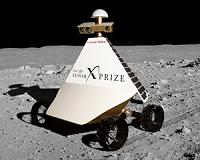 |
London, Canada (SPX) Mar 17, 2010 A researcher from The University of Western Ontario has helped solve a 37-year old space mystery using lunar images released yesterday by NASA and maps from his own atlas of the moon. Phil Stooke, a professor cross appointed to Western's Departments of Physics and Astronomy and Geography, published a major reference book on lunar exploration in 2007 entitled, "The International Atlas of Lunar Exploration." Yesterday, images and data from Nasa's Lunar Reconnaissance Orbiter (LRO) were posted. The LRO, scheduled for a one year exploration mission about 31 miles above the lunar surface, will produce a comprehensive map, search for resources and potential safe landing sites and measure lunar temperatures and radiation levels. Using his atlas and the NASA images, Stooke pinpointed the exact location of the Russian rover Lunokhod 2, discovering tracks left by the lunar sampler 37 years ago after it made a 35-kilometre trek. The journey was the longest any robotic rover has ever been driven on another celestial body. As soon as the NASA photos were released, scientists around the world, including Stooke, began work to locate the rover. Stooke set up a searchable image database and located the photograph he needed, among thousands of others. "The tracks were visible at once," says Stooke. "Knowing the history of the mission, it's possible to trace the rover's activities in fine detail. We can see where it measured the magnetic field, driving back and forth over the same route to improve the data. And we can also see where it drove into a small crater, and accidentally covered its heat radiator with soil as it struggled to get out again. That ultimately caused it to overheat and stop working. And the rover itself shows up as a dark spot right where it stopped." The find, he adds will mean that older maps published by Russia will now need to be revised. Stooke says that NASA scientists have used his atlas in both preparation and data recovery. His next project is a similar volume on Mars exploration which will include the best maps of the moons of Mars.
Share This Article With Planet Earth
Related Links Centre for Planetary Science and Exploration (CPSX) Mars News and Information at MarsDaily.com Lunar Dreams and more
 Space Available On Lunar Expeditions
Space Available On Lunar ExpeditionsPittsburgh PA (SPX) Mar 16, 2010 Astrobotic Technology will carry 240 lbs. (109 kg) to the Moon for researchers and marketers as part of its maiden expedition in 2012 to win the Google Lunar X Prize. Science instruments, prototype exploration devices and commercial packages will be carried at $700,000 per pound, plus a $250,000 fee per payload to cover the engineering costs of integrating it into either the expedition's lander ... read more |
|
| The content herein, unless otherwise known to be public domain, are Copyright 1995-2010 - SpaceDaily. AFP and UPI Wire Stories are copyright Agence France-Presse and United Press International. ESA Portal Reports are copyright European Space Agency. All NASA sourced material is public domain. Additional copyrights may apply in whole or part to other bona fide parties. Advertising does not imply endorsement,agreement or approval of any opinions, statements or information provided by SpaceDaily on any Web page published or hosted by SpaceDaily. Privacy Statement |